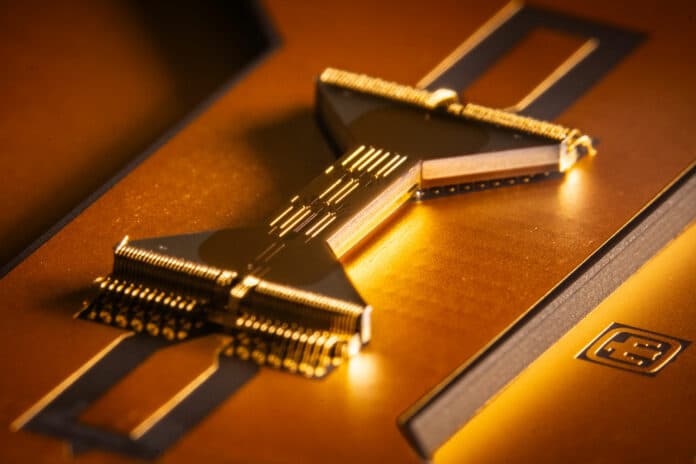Sandia National Laboratories has produced its first lot of a new world-class ion trap, a central component for certain quantum computers.
Called the Enchilada Trap, the new device enables scientists to build more powerful machines to advance the experimental but potentially revolutionary field of quantum computing. An ion trap is a microchip capable of holding electrically charged atoms or ions. A quantum computer can run more complex algorithms with more trapped ions or qubits.
The Enchilada Trap could store and transport up to 200 qubits using a network of five trapping zones inspired by its predecessor, the Roadrunner Trap.
In addition to traps operated at Sandia, several traps will make their way to Duke University, Sandia’s research partner through the Quantum Systems Accelerator, for performing quantum algorithms.
According to Sandia scientist Daniel Stick, a quantum computer with up to 200 qubits and current error rates may not be able to outperform a conventional computer in solving useful problems. However, this technology will allow researchers to explore and experiment with architectures that have many qubits. This will eventually pave the way for more sophisticated quantum algorithms that can be used in various fields such as physics, chemistry, data science, materials science, and other areas.
“We are providing the field of quantum computing room to grow and explore larger machines and more complicated programming,” Daniel said.
The Sandia team overcame a series of design challenges to bring this quantum innovation to fruition. They needed space to hold more ions and a way to rearrange them for complex calculations. The solution was a network of electrodes that branches out similar to a family tree or tournament bracket. Each narrow branch serves as a place to store and shuttle ions.
The Enchilada Trap uses the same design in a tiled way to explore a smaller trap’s scaling properties. Daniel believes the branching architecture is currently the best solution for rearranging trapped ion qubits and anticipates that future, even larger versions of the trap will feature a similar design.
Another concern was regarding the dissipation of electrical power on the Enchilada Trap. This was solved by designing new microscopic features to reduce the capacitance of certain electrodes, thereby producing less heat.
“Our team is always looking ahead,” said Sandia’s Zach Meinelt, the lead integrator on the project. “We collaborate with scientists and engineers to learn about the kind of technology, features, and performance improvements they will need in the coming years. We then design and fabricate traps to meet those requirements and constantly seek ways to further improve.”
